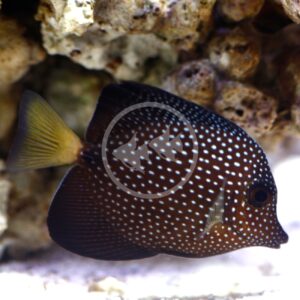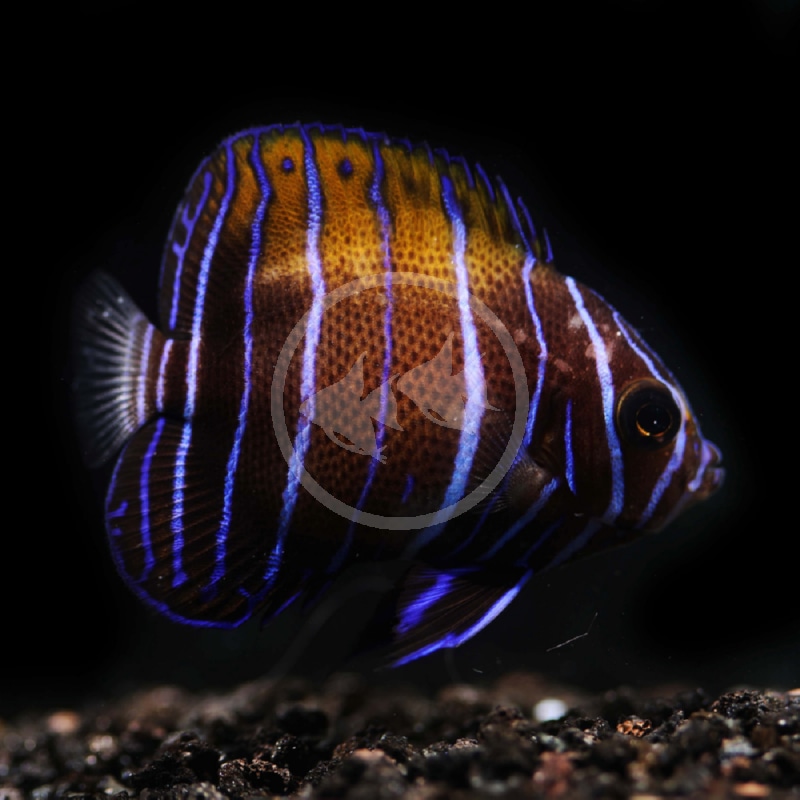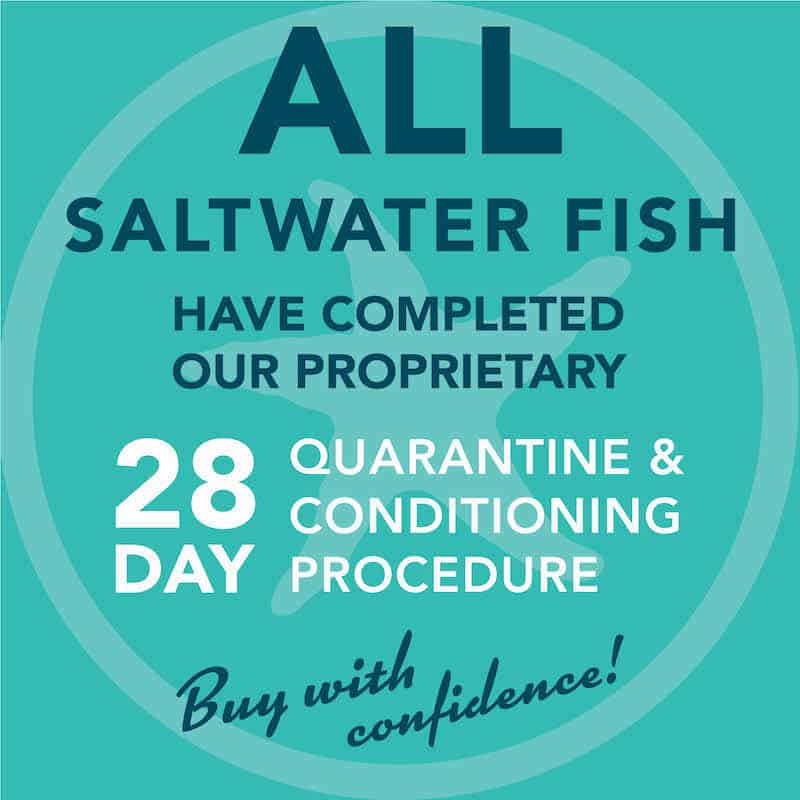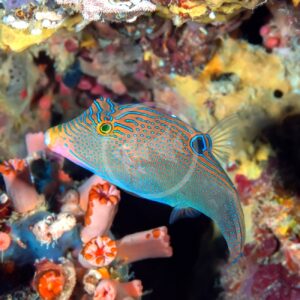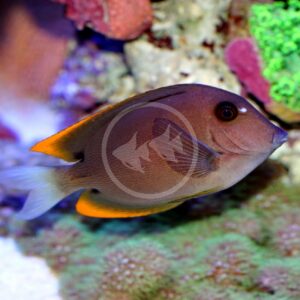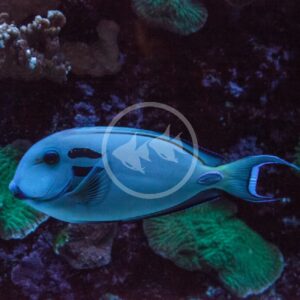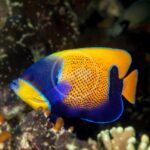
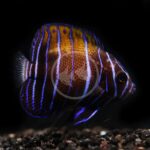


ANGEL – MAJESTIC Pomacanthus navarchus
$299.99 – $499.99Price range: $299.99 through $499.99
The Majestic Angelfish, also known as the Blue Girdled Angelfish, is found across the Indo-Pacific region. As a juvenile, the Majestic angelfish has several vertical light blue bars that are interchanged between dark blue bars. This sort of pattern, while the interchangeable colors can vary, is common among many juvenile Pomacanthus angelfish. Distinguishing characters of the juvenile Majestic angelfish is a gold-yellow color seen in its dorsal fin and its caudal (tail) fin is white. As the Majestic angelfish matures, the bar patterning is nearly lost except for the areas around its face, girdle and posterior, while the center of its body, dorsal and caudal fins become bright yellow. The Majestic angel is prized for not only its striking appearance, but its adaptability to aquarium life and being the smallest Pomacanthid angel, reaching an approximate size of 10″.
Care Level: Moderate
Temperament: Semi-Aggressive
Reef Compatible: With Caution
General Description: The Majestic Angelfish, also known as the Blue Girdled Angelfish, is found across the Indo-Pacific region. As a juvenile, the Majestic angelfish has several vertical light blue bars that are interchanged between dark blue bars. This sort of pattern, while the interchangeable colors can vary, is common among many juvenile Pomacanthus angelfish. Distinguishing characters of the juvenile Majestic angelfish is a gold-yellow color seen in its dorsal fin and its caudal (tail) fin is white. As the Majestic angelfish matures, the bar patterning is nearly lost except for the areas around its face, girdle and posterior, while the center of its body, dorsal and caudal fins become bright yellow. The Majestic angel is prized for not only its striking appearance, but its adaptability to aquarium life and being the smallest Pomacanthid angel, reaching an approximate size of 10″.
Diet Requirements: In the wild large angelfish are very omnivorous. A varied diet of high quality algae, proteins, pellets, flakes, and enriched frozen foods are important for best coloration, immune function and optimal health. Angelfish specific foods that include sponges are highly recommended for this species.
Care Requirements: A minimum 125 gallon aquarium with 12+ inch width is ideal. Juvenile specimens can be temporarily raised in smaller quarters (no less than 75 gallons) as long as it is upgraded accordingly. This angelfish enjoys a variety of rock work and crevices to take refuge, but also should be provided with open swimming space. The Majestic angel is rather non-confrontational with most tank-mates and can be quite shy upon introduction; it will become more bold as it settles in. The Majestic angel may have territorial – aggressive conflicts with conspecifics (including other species within the genus). If you want to house multiple types of larger angelfish together, it is best to add them all at once, or closely together at the very least, and as juvenile or sub-adult specimens (which are not nearly as territorial as adults) for the best chance of success. If you want to house a dwarf angel (Centropyge) in an aquarium with a larger angelfish species, the dwarf angelfish absolutely should be added alone first and allowed plenty of time to establish itself. Ultimately, certain larger angelfish do best as the only angelfish species in an aquarium. While the Majestic angelfish can be added “with caution” to a reef aquarium, they have been observed to nip at large polyp stony corals and clam mantles. They have been reported to leave small polyp stony corals and more noxious soft corals alone, however this behavior likely varies individual to individual. Recommended water conditions, 72-78° F, KH 8-12, pH 8.1-8.4, salinity 1.020-1.025.
Purchase Size: Adult Medium: 3″ to 4-1/4″; Large: 4-1/2″ to 5-1/2″; XLarge: 5-3/4″ to 6-1/2″
Note: Your item may not look identical to the image provided due to variation within species. Purchase sizes are approximate.
Dry goods orders are shipped via US Postal Service or UPS to the address provided at checkout based on the selection made in your website shopping cart. Product is carefully packed to help prevent any damage during shipping. Once processed you will receive a shipment notification via email with tracking number, and delivery notification. Please allow 48 hours for processing after your order is placed.
Perishable items (i.e. live plants, refrigerated/frozen foods) are shipped via US Postal Service 2-3 day to the address provided at checkout for a $25.00 flat rate charge. Items are packed with secure packing material and heat, cold, or Cryo packs as needed to maintain safe temperatures during transit. If one or more perishable items are in the shopping cart at checkout the $25.00 perishable shipping charge will automatically appear and need to be selected. Once processed you will receive a shipment notification via email with tracking number. Please allow 48 hours for processing after your order is placed.
Livestock (i.e. fish, invertebrates, coral) are shipped via UPS Overnight to the address provided at checkout for a $55.00 flat rate charge. Livestock is packed in insulated styrofoam boxes with secure packing material and heat, cold, or Cryo packs as needed to maintain safe temperatures during transit. If one or more livestock items are in the shopping cart at checkout the $55.00 livestock shipping charge will automatically appear and need to be selected. Livestock is shipped Monday through Wednesday ONLY (no weekend delivery is available) weather permitting, and we reserve the right to delay shipping until conditions are appropriate for safe arrival. Once your order is placed we will contact you to arrange the best shipping date based on these criteria. Someone must be available to receive the livestock order on the first delivery attempt. Once processed you will receive a shipment notification via email with tracking number. Please allow 48 hours for processing after your order is placed.
For mixed dry goods/perishable & livestock orders items will be shipped via their corresponding shipping methods outlined above. Dry goods will be shipped via US Postal Service or UPS based on your selection and checkout, while livestock will ship via UPS Overnight for a $55.00 flat rate charge. You will receive separate notifications and tracking numbers for the dry goods and livestock. Please note due to different carriers and shipping methods dry goods and livestock may arrive on different days.
Related products
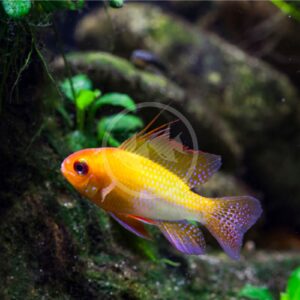
CICHLID – RAM GERMAN GOLD
Mikrogeophagus ramirezi
$5.99 – $26.99Price range: $5.99 through $26.99
PUFFER – BLUE SPOT Canthigaster solandri
$89.99 – $139.99Price range: $89.99 through $139.99TANG – SAILFIN Zebrasoma veliferum
$99.99 – $199.99Price range: $99.99 through $199.99TANG – TOMINIENSIS Ctenochaetus tominiensis
$119.99 – $169.99Price range: $119.99 through $169.99TRIGGER – HUMU HUMU Rhinecanthus aculeatus
$89.99 – $139.99Price range: $89.99 through $139.99TANG – LIEUTENANT Acanthurus tennenti
$139.99 – $189.99Price range: $139.99 through $189.99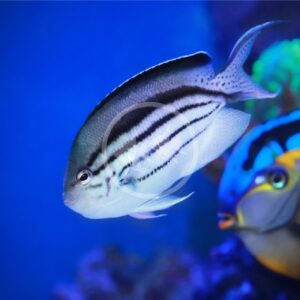

ANGEL – LAMARCK Genicanthus lamarck
$99.99 – $299.99Price range: $99.99 through $299.99